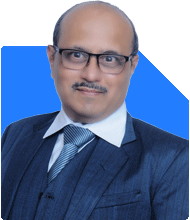Nayagam P P |10854 Answers |Ask -Follow
Career Counsellor - Answered on Jul 04, 2025
He started his career as an HR professional and has over 10 years of experience in tutoring and mentoring students from Classes 8 to 12, helping them choose the right stream, course and college/university.
He also counsels students on how to prepare for entrance exams for getting admission into reputed universities /colleges for their graduate/postgraduate courses.
He has guided both fresh graduates and experienced professionals on how to write a resume, how to prepare for job interviews and how to negotiate their salary when joining a new job.
Nayagam has published an eBook, Professional Resume Writing Without Googling.
He has a postgraduate degree in human resources from Bhartiya Vidya Bhavan, Delhi, a postgraduate diploma in labour law from Madras University, a postgraduate diploma in school counselling from Symbiosis, Pune, and a certification in child psychology from Counsel India.
He has also completed his master’s degree in career counselling from ICCC-Mindler and Counsel, India.
... more

Sir, I am getting cse specialization in software engineering in srm ktr and I also have 13800 rank in comedk. Can you please tell which comedk college is better for ise or cse,and which is better srm or comedk.
Final Recommendation:
Given SRM KTR’s superior 96% placement consistency, extensive software-focused labs, and strong corporate partnerships, choose SRM KTR Software Engineering for immediate ROI. If preferring a COMEDK route under rank 13,800, prioritise Bangalore Institute of Technology CSE for balanced infrastructure and placements, followed by PESCE Mandya CSE or BMSITM CSE. All the BEST for the Admission & a Prosperous Future!
Follow RediffGURUS to Know More on 'Careers | Money | Health | Relationships'.
For marginally higher CSE/ISE placements, stronger recruiter diversity and rural-urban internship exposure, recommendation is RNSIT Bangalore. If VTU autonomy, community engagement and a slightly more collegiate environment are priorities, choose PESCE Mandya supplemented by proactive self-sourced internships.
You may like to see similar questions and answers below
Nayagam P P |10854 Answers |Ask -Follow
Career Counsellor - Answered on Jul 09, 2024
Nayagam P P |10854 Answers |Ask -Follow
Career Counsellor - Answered on Jul 19, 2025
Nitin Narkhede |113 Answers |Ask -Follow
MF, PF Expert - Answered on Dec 15, 2025
Nitin Narkhede |113 Answers |Ask -Follow
MF, PF Expert - Answered on Dec 15, 2025
Ramalingam Kalirajan |10893 Answers |Ask -Follow
Mutual Funds, Financial Planning Expert - Answered on Dec 15, 2025
Ramalingam Kalirajan |10893 Answers |Ask -Follow
Mutual Funds, Financial Planning Expert - Answered on Dec 15, 2025
Radheshyam Zanwar |6746 Answers |Ask -Follow
MHT-CET, IIT-JEE, NEET-UG Expert - Answered on Dec 15, 2025
Ramalingam Kalirajan |10893 Answers |Ask -Follow
Mutual Funds, Financial Planning Expert - Answered on Dec 15, 2025
Ramalingam Kalirajan |10893 Answers |Ask -Follow
Mutual Funds, Financial Planning Expert - Answered on Dec 15, 2025
Ramalingam Kalirajan |10893 Answers |Ask -Follow
Mutual Funds, Financial Planning Expert - Answered on Dec 15, 2025
Samraat Jadhav |2508 Answers |Ask -Follow
Stock Market Expert - Answered on Dec 15, 2025
Ramalingam Kalirajan |10893 Answers |Ask -Follow
Mutual Funds, Financial Planning Expert - Answered on Dec 15, 2025






















